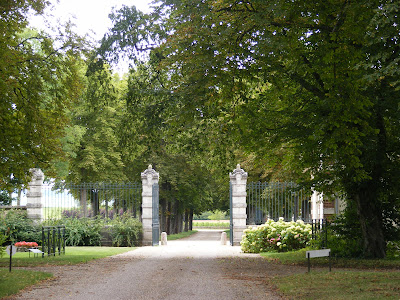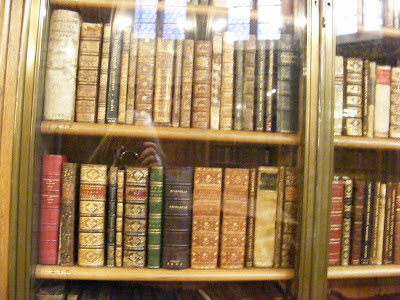This is a series about a book, Theory of the Leisure Class, by American economist Thorstein Veblen. He titled Chapter Eight Industrial Exemption and Conservatism.
In the last post we started talking about societies' development from pressure to change. In modern society this pressure is economic. The leisure class is 'exempt from industry', ie their income is not earned, and so this class is largely sheltered from economic pressures. This allows them not to change, making this class largely conservative.
Veblen goes on to say that altered conditions brought about by social changes may benefit the group as a whole, but generally will result in a decrease 'of facility or fullness of life for some members of the group'. Those at risk of losing from the change have the most incentive to accept new standards and in doing so to hopefully shape the new customs to their own advantage. Veblen refers to the lower classes, but he means the middle class when he talks about people who try to create and direct change to their own advantage. I don't recall that Veblen ever uses the term 'middle class' but he does talk about the 'business class'.
At first when Veblen is describing why the leisure class is resistant to change one things he's almost defending them, saying this is not due to any 'unworthy motive' such as protecting their own interests by maintaining present conditions. He says that revulsion to change is instinctive in all men and only overcome by stress of circumstances.
“All change in habits of life and of thought is irksome.”
If we weren’t all subject to the forces of economic urgency none of us would choose to change our ways.
Conservatism is an obvious feature of the wealthy class. The wealthy class set the standard for what is respectable and desirable and therefore it is more respectable to be conservative
“… it is imperatively incumbent on all who would lead a blameless life in point of social repute. Conservatism, being an upper-class characteristic, is decorous; and conversely, innovation, being a lower class phenomenon, is vulgar.”
Even in cases where there is substantial merit in the case for innovation, particularly when
“…the evils which he seeks to remedy are sufficiently remote in point of time or space or personal contact — still one cannot but be sensible of the fact that the innovator is a person with whom it is at least distasteful to be associated, and from whose social contact one must shrink. Innovation is bad form.”
I love that last sentence!
“The fact that the usages, actions, and views of the well-to do leisure class acquire the character of a prescriptive canon of conduct for the rest of society, gives added weight and reach to the conservative influence of that class. It makes it incumbent upon all reputable people to follow their lead. So that, by virtue of its high position as the avatar of good form, the wealthier class comes to exert a retarding influence upon social development far in excess of that which the simple numerical strength of the class would assign it.”
Some of the proposed changes that Veblen mentions that would (do any of these phrases seem familiar?) “… shake the social structure to its base … reduce society to chaos … subvert the foundations of morality … make life intolerable … confound the order of nature…” in 1899 were an interesting list:
the disestablishment of the Anglican Church
an increased facility of divorce
adoption of female suffrage
prohibition of the manufacture & sale of intoxicating beverages
abolition or restriction of inheritances
the disestablishment of the Anglican Church
an increased facility of divorce
adoption of female suffrage
prohibition of the manufacture & sale of intoxicating beverages
abolition or restriction of inheritances
Any of this sound familiar?























































